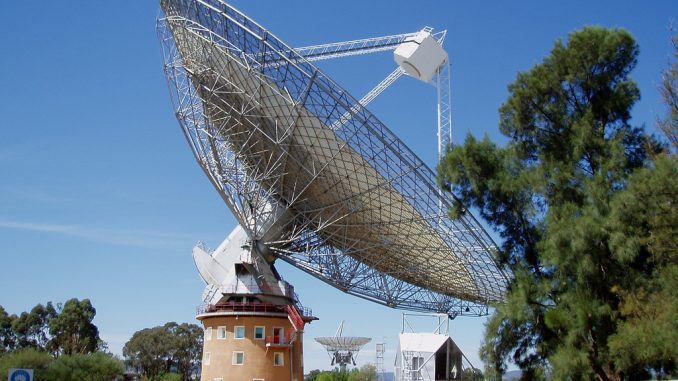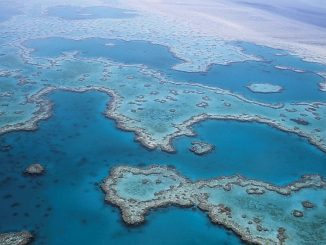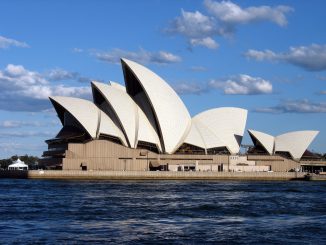
Twenty kilometers north of Parkes, New South Wales, Australia is a simple radio telescope observatory known officially as the Parkes Observatory. Unofficially, it’s known as The Dish.
The Parkes Observatory is operated by the Commonwealth Scientific and Industrial Research Organisation (CSIRO) as part of the Australia Telescope National Facility, a network of radio telescopes. The Parkes Radio Telescope is the largest, and oldest of the eight antennas that make up the Australian Telescope National Facility.
The brainchild of E.G. “Taffy” Bowen, chief of the CSIRO’s Radiophysics Laboratory, the Parkes Radio Telescope was completed in 1961 and has played an important role in astronomical research ever since. During WWII, Bowen worked on radar development in the United States and thanks to that work and the relationships he fostered, he was able to call on old friendships to persuade two philanthropic organizations, the Carnegie Corporation and the Rockefeller Foundation to fund half the cost of the telescope. With a large amount of funds coming from outside Australia, then prime minister Robert Menzies found it impossible not to fund the rest of the project.
On 20 July 1969, when Buzz Aldrin turned on the camera of the Apollo Lunar Module, three tracking antennas simultaneously received the signal, the 64-metre Goldstone antenna in California, the 26-metre antenna at Honeysuckle Creek near Canberra in Australia, and the 64-metre dish at Parkes. It was the Parkes dish that NASA used for all but nine minutes of the 2.5 hour broadcast.
Parkes Observatory Research
The Parkes Observatory has been involved in decades of cosmological research including:
- The identification of the first known Quasar in 1963.
- Mapping of important regions in the galaxy.
- Participated in the NASA Apollo Moon missions, Voyager II encounter of Neptune in 1989, and Mars missions in 2004.
- ESO’s Giotto Spacecraft encounter of Halleys Comet in 1986.
- Galileo Spacecraft’s exploration of Jupiter and its moons in 1997.
- Cassini Huygens mission to Saturn and Titan in 2005.
- Pulsar survey work including the discovery of the first double Pulsar system in 2003.
- SETI Project Phoenix.
The Disc Facts
- The Dish was built in 1961 and was fully operational by 1963.
- The movie “The Dish” was loosely based on Parkes involvement with the Apollo moon landings.
- Parkes Observatory has also starred in numerous commercials, documentaries, and like all great attractions, a Korean romance movie.
- The radio telescope was declared a National Engineering Landmark by Engineers Australia.
- The Disc supported NASA’s Apollo Missions in late 1960s.
- Between 1997 and 2002 it conducted the HIPASS neutral hydrogen survey, the largest blind survey for galaxies in the neutral hydrogen line to date.
- More than half of currently known pulsars were discovered by the Parkes Observatory.
- On Monday, 31 October 2011, Google Australia replaced its logo with a Google Doodle in honor of the Parkes Observatory’s 50th Anniversary.


